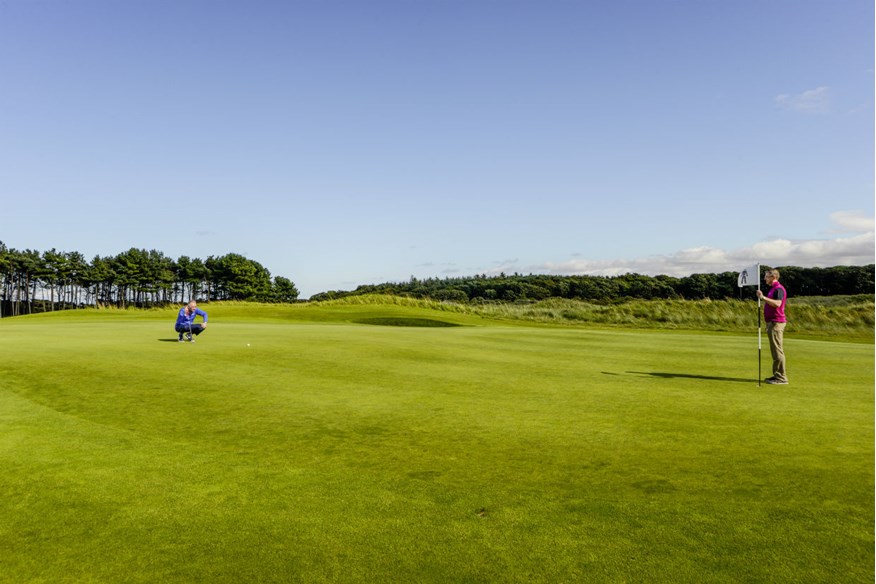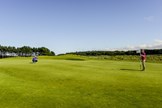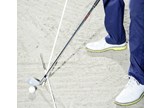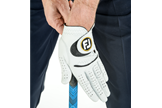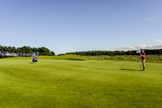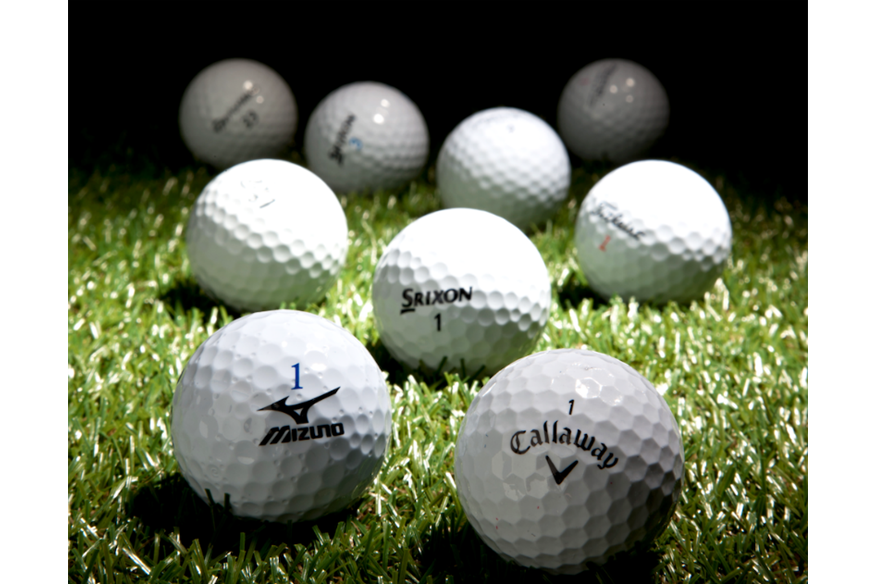20 ways to improve your game: Advice from TG’s top 50 coaches
Last updated:
20 ways to improve your game: Advice from TG’s top 50 coaches
There is only one sure way to play better than you ever have before when you head in to next season, and that’s to do things just a little bit differently.
Bring your usual approach to your game and you can expect the usual results; but make even one or two smart improvements to your preparation, practice and play and you can start to break through your own personal performance barriers.
We asked our team of Top 50 coaches to reveal the quickest and most effective ways to sharpen your approach. They have obliged with 20 welcome doses of advice covering equipment, technique, and course management. We hope his formidable package of information and enlightenment will help you take your game to the next level.
1. STREAMLINE YOUR PRE-SHOT ROUTINE
– Kevin Hale, HIT Academy, Forest of Arden, Warwicks
Regular TG readers will know the importance of a pre-shot routine; it improves your set-up and gives you consistency as well as confidence through familiarity. But for a pre- shot routine to be effective, it has to be short; the less time you spend over the ball, the less time you have for doubt to creep in. So adopt a simple “two looks and go” method. Use it for every shot and make it consistent.
➤ Walk in
➤ Aim the club
➤ Look at the target
➤ Take your stance
➤ Re-focus on the target
➤ GO.
2. IMPROVE YOUR BOOK-KEEPING
– Ian Clark, World of Golf, Surrey
A notebook is one of golf’s most underused performance aids. Use one for:
➤ Swing thoughts: After the round write down which ones worked, which ones didn’t, what you were thinking of during your best rounds, and so on. You can then look back at them in the future when your game goes sour.
➤ Preparation: Make a note of what you did prior to the good rounds as well as the bad rounds. A pattern will emerge. You will perhaps discover you play worse when you spend more than 20 minutes warming up, or that your putting massively improves with five minutes on the practice green. Use your findings to inform future round preparation.
3. USE YOUR DISTANCE MEASURING DEVICE
– Simon Payne, Cowglen GC, Glasgow
DMDs make it simple to know how far away from the green we are. But most club players use the middle-of- the-green yardage and pick a club they need to hit perfectly to send the ball that distance. This often results in trying to force the shot, and mis-strikes. Instead, look at the yardage to the back of the green and choose a club that will hit it that distance. Even if you flush it, the very worst you’ll be is at the back of the green.
4. BUILD A SECURE GLOVE-HAND HOLD
– Lee Scarbrow, John O’Gaunt GC, Bedfordshire
If you want to be more consistent, it’s important you are placing your hands on the club in a way that allows you to control it. To achieve this, focus on your gloved or lead hand and follow this golden rule: “Palm first, fingers second”.
This simple rule is the best defence against your lead hand slipping under the handle – a very common error that robs your action of power and control. Begin by placing the palm of the hand against the handle, as shown.
Check the grip runs from the palm crease under the heel of the hand to the index finger knuckle. This will help you get the feeling of the palm being more on top of the grip than under it. From here, simply close your fingers around the handle. Your thumb and index finger joint should be level, with the line between the two pointing up to your trail shoulder.

5. MAKE BETTER USE OF THE COURSE FOR PRACTICE
– Simon Payne, Cowglen GC, Glasgow
Golf is one of the few sports where its players tend to make practice significantly easier than the actual game itself. Whether it’s hitting balls from a constantly at artificial surface, protected by the elements or hitting the shots and clubs we are already good at, we’ve all done it. So to make 2018 your best season ever, use the course to make practice more difficult than the real thing. Here are four ways to do it:
➤ Worst Ball Scramble
This can be done on your own or with a friend. On your own, hit two balls from each spot. Rather than playing the best, which we invariably do, play the worst. Continue to do this until the hole is completed.
➤ Stretch The Course
Ideally, play from the medal tees whenever you can. But if your club doesn’t permit this, play from the tee of the day but hit a shorter club that leaves a longer approach. That way you get familiar with hitting from further out, and in competition your confidence doesn’t get deflated through hitting much longer clubs.
➤ No Gimmes
Very simple, but when you’re out playing on your own don’t give yourself anything. Putt everything out and count every shot.
➤ No Mulligans/ Second Serves
When playing on your own, it is very tempting to hit another ball if you’re not too happy with the first attempt. Though hitting another shot allows you the opportunity to try again and improve your method, it is not what we are allowed to do during a competition. See how disciplined you can be by only allowing yourself one shot and one shot only.
6. SET UP MID-RANGE PUTTING PRACTICE
– Ian Clark, World of Golf, Surrey
Practise more putts from 20-30 feet. These aren’t the ones you are going to hole, but club golfers often fall foul of three-putting from this range; start two-putting more often from middle distance and your scores will drop.
7. CHOOSE THE RIGHT BALL FOR YOUR GAME
– Darren Parris, North Foreland Gc, Kent
We can easily fall into the trap of spending hundreds of pounds on new equipment and forget to ensure we’re playing the correct golf ball. Golf balls can feel firmer or softer, spin more or less and fly higher or lower. Selecting one that suits your game can be a sneakily effective way of saving shots this summer. Finding the right ball is a relatively straightforward process. I would recommend following these steps:
➤ Start by analysing what type of ball you like the feel of. Do this from the green back to the tee; if you putt and chip better with a soft-feeling, high- spinning tour-level ball like a TP5 or Pro V1, then improving that element of your game will probably save you more shots than a few extra yards from the tee.
➤ Find your nearest PGA Professional with a launch monitor. Hit 10-12 shots with a long, medium and short iron and measure the height and spin rates to determine you’re getting the correct spin, trajectory, and distance on your iron shots.
➤ Finally hit 10-12 shots using your driver, to measure launch angle and spin rates. Getting these two numbers correct can really help maximise your distance from the tee; we often find that by switching to a lower-spinning ball, golfers can gain eight-to-10 yards with exactly the same swing. This can also help reduce curvature for better accuracy off the tee.
Once you’ve found the correct ball for your game, only use that ball; it will help you develop some consistency with it, especially on and around the greens.
Steps two and three can sound a little bit daunting, but half an hour to an hour with the knowledge of your PGA Professional and his launch monitor data is all you need, and the rest is down to your personal feel in the short game.
8. PRIORITISE RHYTHM AND BALANCE
– Keith Williams, Hawkstone Park, Shropshire
One of my all-time mantras for the golf swing is that if you could promise to execute your best rhythm and balance on every shot you are almost guaranteed to hit lots more great, good or get-away-with-it shots! Base your season around those two attributes, and you will see improved levels of consistency.
Here are two things you can work on:
➤ Downswing weight shift. Be more conscious of a positive shift into your forward (target side) foot as you start down. This shift has to be from the ground upwards; feet, knees and hips initiate with the upper body following that biomechanical lead. Remember, you must continue to rotate your body through impact – don’t hold back but remember rhythm and balance need to be there too.
➤ A good finish. Yes, the ball may be gone but the completion of your swing is a true barometer of the quality of your movement. Are you balanced with your forward foot solid on the ground? Does it allow you to stand tall with your upper torso facing the target so you can observe – and hopefully enjoy – the flight of your shot? Poor balance is responsible for many classic swing errors. Improve yours and you’ll be amazed at how your overall technique tightens up.
9. IMPROVE YOUR FEEL ON THE GREENS.
– Richard Lambert, Crosland Heath Gc, W Yorkshire
Your scores will improve beyond measure if you can improve your ability to get up and down.
Try this drill to sharpen up your short game:
➤ Lie five clubs on the ground two yards apart like a ladder. Take your five shortest irons, usually 8-iron-SW, and stand five yards away from the nearest club on the ground. Now try hitting different clubs and landing balls in each gap between the clubs. This is a brilliant way to improve feel.
➤ When the balls land, watch how they release up the green. You will quickly develop a much-improved level of feel, and be better able to choose the right shot when facing varying on-course situations that require different flights and distances.
10. PLAY TO THE CENTRE OF THE GREEN
– Simon Payne, Cowglen GC, Glasgow
Ask yourself this – where would you aim if there was no flagstick on the green? If you can ignore the flag and aim for the centre of the green every time, you will see a big difference in your scoring. Aiming for the heart of the green increases your margin for error, and stats show you are more likely to take two shots from on the green than from off it, even if the distance is greater. Hitting to the centre also stops you being fooled by sucker pins and getting into positions that can be card and confidence wreckers. This area, of course, management demands real discipline, but it can really sharpen up your scorecard.

11. NEW SEASON, SHARP GROOVES
– By Ian Clark, World of Golf, Surrey
If you have not changed your wedges in the past 12-18 months, do it for next season. Grooves get worn, and as a result you lose potential spin. Ideally, do what tour players do – have two sets of wedges, one for practice and one for play.
12. LEARN YOUR TRUE DISTANCE
– Kevin Hale, HIT Academy, Forest of Arden, Warwicks
Use your next few rounds to get a real-world average distance for each of your clubs. Write down each shot you hit and the exact distance the ball actually travels. Include miss- hits, fliers out the rough, everything. This gives you a true club average that will prove far more beneficial than the usual alternative – basing your iron distances on the one great strike in 10 you hit!
13. DEVELOP A STRUCTURE FOR YOUR PRACTICE
– Keith Williams , Hawkstone Park, Shropshire
Unlike low handicap amateurs and professionals who work hard to perfect their techniques during the o season, the average player tends to start picking up their game again after the winter break. This makes a realistic approach to how to make your season better than last year vital. Ideally, a few pep-up lessons with your coach are a must as this will offer you some valuable assessment and direction before the season gets too far in. But, to gain the most from your practice or early season play, set some realistic goals and disciplines.
As a benchmark, I would suggest:
➤ Try to practise twice a week at the range, hitting 60 balls per session. But don’t just “ball bash”; break those 60 balls into 6 x 10 ball groups.
➤ First 10: Simple warm-up shots: 5xwedges and 5x8irons
➤ Balls 11-30: Make 20 swings working on your coach’s recommendations. This is technical work, so focus on the movements you have been working on without any reference or concern for the outcome of the shots themselves.
➤ Balls 31-50: Split these into 10 irons and 10 woods, working on swing rhythm and balance.
➤ Balls 51-60: The final group could be working on ball-flight observation or simply winding the session down with wedge shots to various distances and targets.
Practising like this will offer a full programme of valuable feedback and help you learn what works best to get your game up and running.

14. COMMIT TO THE HIGH SIDE ON SLOPING PUTTS
– John Woodroffe, World Of Golf, Surrey
On a sloping putt three things can happen, provided you get the putt up to the hole; the ball can miss on the high side of the hole, drop in, or miss on the low side. Obviously the middle of those three is the best outcome, but to hole more putts, commit to favouring the higher side with your read.
The high side is termed the pro side because the ball has gravity on its side; there is always the chance that, if the ball slows down sufficiently, it can drop in. The low side, termed the amateur side, relates to the fact that from here, the ball never has a chance of going in.
So, here’s the big tip. Play one round where, whatever slope allowance you thought you had to make for a putt, add another 50%. It’s much better to miss on the professional side of the hole. Your putts will always have a chance of going in now and the law of averages says that some of them will.
As you move forward, try to make it a putting policy to see putts dropping down and in from the high side of the hole. My bet is that your sloping putt “sink rate” will improve dramatically!
15. DEVELOP A TOUR LEVEL CHIPPING ACTION
– Mark Mcgeehan, Mcgeehan Golf, Cherwell Edge Gc
One of the biggest short game mistakes that I see among club players is too much manipulation from the hands. A tour-level chipping action means eliminating the hands and feeling the shoulders and turn are controlling the blade. That helps you create a shallow attack that lets you take advantage of the curved sole’s forgiveness.
➤ Use a narrow stance to promote feel and reduce power. I favour the weight to be on the lead side for a standard chip or pitch shot with mid trajectory.
➤ At set-up, drop the club and splay both hands, palms facing upwards. Turn back and through with your hands in this position; it eliminates independent hand action, helping you feel how shoulder turn controls the blade.
➤ Through impact, keep your wrists quiet and allow your body to accelerate the club smoothly. Listen for the nice sound of the sole of the club hitting the turf.
➤ Develop distance control by focusing on how far back the handle (grip) will travel: knee to knee, thigh to thigh and hip to hip with smooth acceleration.
➤ Turn fully towards the target, still using the body and not wrists or hands. The ball will pop up softly o the clubface.
16. AVOID THIS KEY SAND SABATURE
– Gareth Johnston, Calcot Park Gc, Berks
Don’t allow your performance to be ruined by a fear of bunkers. Perhaps the most common reason for this I see is through strike problems caused by taking the club away too much on the inside. When the club works in around the body it will tend to attack the ball from the inside. You then have to roll the face closed to square it, killing loft and making the leading edge ‘sharper’, and more prone to digging.
In practice, use an alignment cane or old shaft to build a path station. Here’s how:
➤ Place the first on the sand, inside the ball and parallel to your ball- target line. Stick the second into
the sand as shown, angling around 45 degrees up from the ground, and 45 degrees back from the ball-target line. As you address the ball, rest the hosel against the foot of this cane.
➤ As you swing back, feel your clubshaft move up along the angle of the cane. This sets a good, neutral path to your action. Make a few practice backswings, getting used to the feel of this better backswing path. Once you are used to the cane on the backswing, begin to hit balls. Again on the downswing, the cane foils any tendency to drop the club on to the inside.
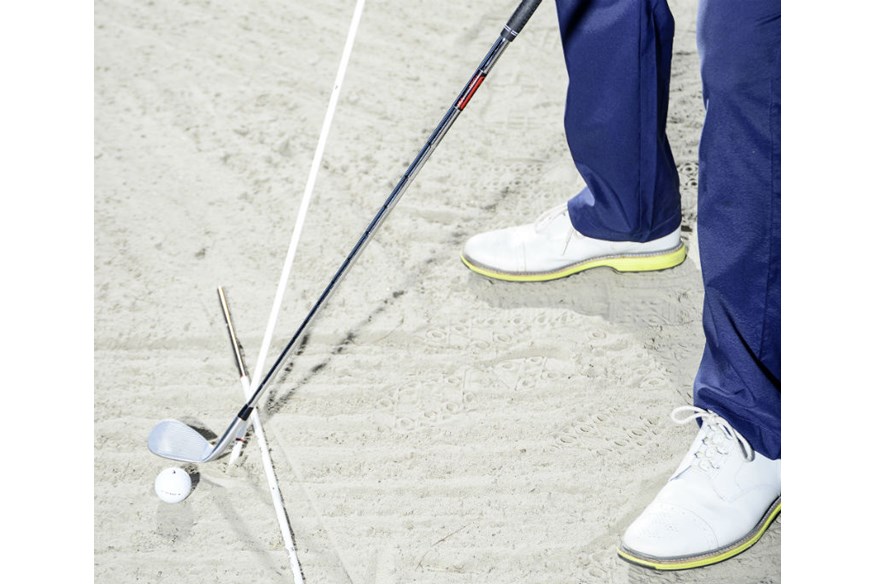
17. WORK ON WEDGE DISTANCE CONTROL
– Ian Clark, World of Golf, Surrey
Improve your short game accuracy this summer by developing your distance control. To do that, take a wedge and work on hitting the same shot every time. For example get your 56o wedge and make a backswing where your lead arm goes back to level with the ground, hit 10 shots doing this and make a note of the distances each ball has travelled. You should have no more than a five-eight yard differential between your furthest and shortest shots. If the gap is deeper, repeat the drill until your dispersion tightens.
18. GET AN OPTIMUM APPROACH YARDAGE
– Simon Payne, Cowglen Gc, Gl
What yardage inside 120 yards are you most comfortable and consistent hitting? With just a little practice, you can turn that shot into a real strength this summer. An optimal approach distance can be played to from a wide variety of situations, whether getting back into position when in trouble or laying up on par 5s or even longer par 4s.
Rather than just trying to get as close to the green as possible, you will start giving a little more thought to where you want to be pitching in from. This stops you trying to force a shot with a long club or taking on the improbable recovery
19. GET RID OF YOUR LONG IRONS
– Kevin Hale, HIT Academy, Forest of Arden, Warwicks
So many players struggle to strike and flight their long irons. If you want to play better, it’s time to get real. Get fitted for some quality hybrid clubs; their more generous sweetspots and easier launch will help you flight your long approaches high and land them softly on the green. See our test on page 107 for more on this.
20. WHY QUESTIONS HOLD THE KEY TO PUTTING
– Gary Nicol And Karl Morris, Co-Authors Of The Lost Art Of Putting
Over the last few years, we have seen hundreds of golfers who have attended our Putting Performance Principles Schools and Masterclasses at Archerfield Links hole more putts, shoot lower scores and ultimately have more fun on the golf course by applying the following simple principles.
What separates the great from the good and the good from the average when it comes to holing putts? From our combined experience, which amounts to more than 60 years of coaching players of all standards from weekend golfers to winners of Major Championships, we have discovered one simple truth: great putters ask great questions!
Questions, good or bad, focus the mind. As the world-famous motivational speaker Tony Robbins once said, “The quality of your questions will determine the quality of your life.” We believe the very same applies to putting.
However, the majority of golfers we see and speak to tend to ask terrible questions. “When will I ever hole a putt?” “Why can’t I get the pace of these greens?” “What will happen on my next putt if I run this one three feet past?” “Why can’t I ever seem to read a putt well?” Sound familiar?
So let us introduce you to some really great questions that you can ask yourself on each and every putt you create from now on. We’re not suggesting you ask all the following questions all the time; but please try them all at some point and find out which ones work best for you.
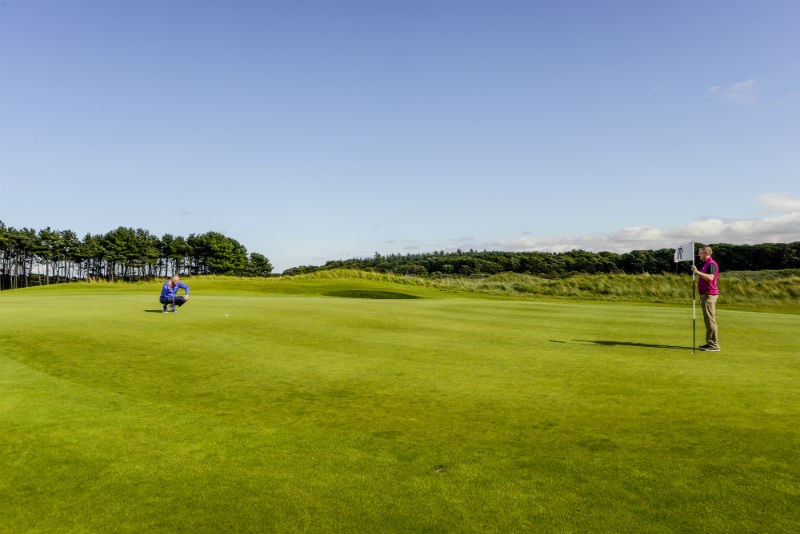
Where is my attention?:
Are you focused on trying to hole the putt, or are you focused on trying not to miss the putt because you just missed a putt of similar length on the previous hole? Trying to hole a putt and trying not to miss a putt may sound fairly similar but, believe us, they are worlds apart.
Is it possible for the ball to go in?
If you are on the putting surface and there are no major obstacles in your way, then the answer will always be yes. Of course it’s possible. We can’t guarantee the ball will definitely go in the hole, but it’s definitely possible… and your acknowledgement of that starts the important process of visualising a successful outcome.
What does the ball need to do to go in?
It needs to travel at the appropriate pace for the line you have chosen. That line will vary according to the pace you choose as pace determines line. By answering this question, you will form a very clear image in your mind of what the ball needs to do; you will see it travelling towards the hole and disappearing at just the right pace. Answering this question will also allow the brain to create a ‘map of movement’ which directs the body to complete the task at hand.
What does a good putt look like?
A wise man by the name of Buddha once said: “We create what we see.” Essentially, if you can’t see what you are trying to create, then all we can do is wish you good luck.
Does a stroke create a putt or vice versa?
Think about that for a minute. As each putt we face is unique, we will need to create a unique amount of force in order for the ball to reach its intended target. Therefore, the putt you are about to create at a unique moment in time will require a slightly different length of stroke. We’re not saying your technique should change according to the length of putt, but the length of the stroke you make will… therefore the putt creates the stroke.
Am I about to create a stroke or a putt?
Understand that you are about to create a putt. Ultimately, great putters find their way rather than the way to get the ball to go into the hole. When Rory McIlroy won the Arnold Palmer Invitational at Bay Hill in March, he talked a lot about “freeing things up mentally. Focusing less on mechanics and using a lot of visualisation and reacting to targets.” If you can think in terms of creating a putt – and not a putting stroke – you can find the assured rhythm that helped Rory birdie five of the last six holes and seal a thrilling three-shot victory.
